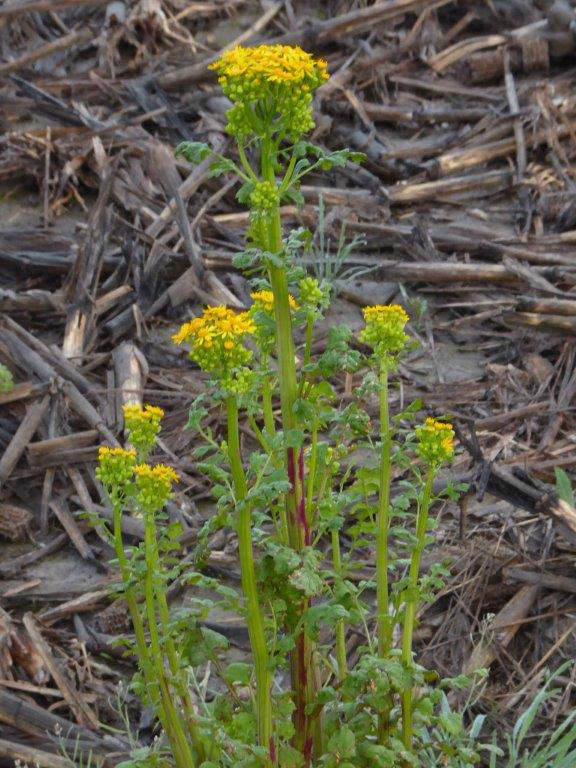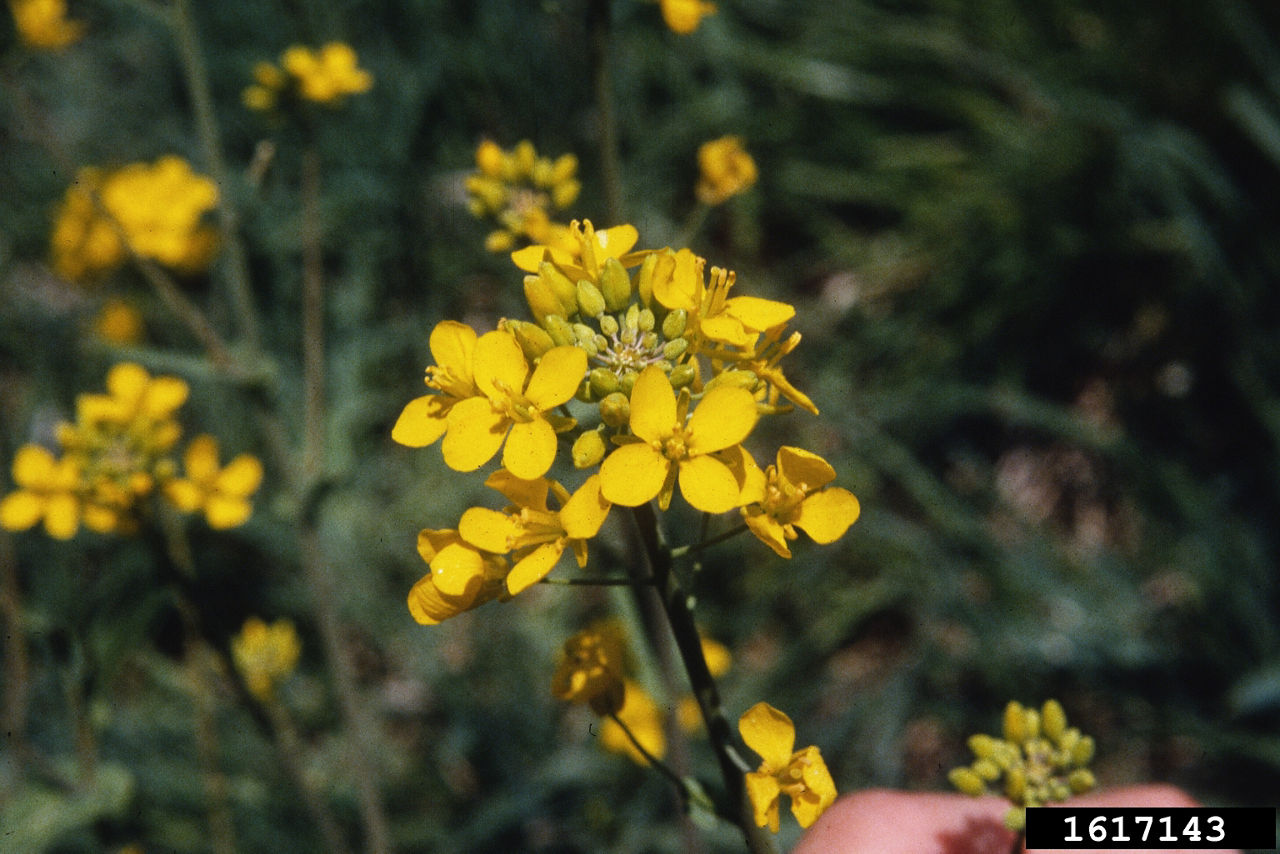Fall Control of Springtime Yellow Flowered Plants – Cressleaf Groundsel and Yellow Rocket
September 24, 2023
Overview
As fall approaches, harvest is top of mind for many growers; however, agronomic management decisions for the following growing season should also be contemplated. One of those management decisions is using a fall burndown program to help reduce seed production from summer annuals and control winter annuals and perennials. The two weeds that are the focus of this article are the winter annuals, cressleaf groundsel (Packera glabella) and yellow rocket (Barbarea vulgaris). Cressleaf groundsel, also known as butterweed, and yellow rocket are yellow flowering plants commonly found across the Corn Belt in reduced tillage fields and pastures. The plants germinate into rosettes in the fall, grow through the winter, and the stems bolt and flower in the spring. Key steps for management of cressleaf groundsel and yellow rocket are plant identification, herbicide type, and herbicide timing.
Plant Identification
Cressleaf Groundsel
Cressleaf groundsel germinates into a basal rosette with leaves that can reach up to 10 inches in length and have round, lobed leaf margins with deep pinnate serrations (Figure 1). Leaves and stems of cressleaf groundsel can be purple in color and the stems are hairless, hollow, and grooved reaching up to 3 feet in height (Figure 2). The stems terminate into clusters of 6 to 12 yellow ray flowers which mature into seeds with white hair that resemble a dandelion (Figure 3).1


)
Yellow Rocket
Yellow rocket is a member of the mustard family that is native to Eurasia. The lower leaves of the plant are 2 to 8 inches long with a large terminal lobe with up to four smaller lobes oppositely arranged along the stalk. The upper leaves become smaller as they progress alternately up the stem and are more coarsely toothed than lobed. The stems are erect, hairless, and bolt from a basal rosette (Figure 4) up to 3 feet in height. The stems branch at the top to form terminal clusters of yellow flowers that contain 4 petals (Figure 5). Yellow rocket reproduces via seeds which are approximately 1 inch long and slender in shape.2


Toxicity
Both, cressleaf groundsel and yellow rocket can cause livestock illness and extra precaution should be taken to avoid prolonged ingestion in pastures and hayfields.
Control
Herbicide applications for control of cressleaf groundsel and yellow rocket are most effective during the fall when applied to the plants’ rosette. Plants that have bolted or flowered in the spring can be more difficult to control with herbicides.1 In general, most broadleaf herbicides commonly applied in the fall provide effective control but consult with your local crop protection representative and state weed management guides to determine programs and rates. An example of an effective fall burndown program that controls cressleaf groundsel and yellow rocket while providing flexibility to plant corn or soybean the following year is Autumn® Super 51 WDG Herbicide at 0.3 to 0.5 oz/acre + 2,4-D at 1.0 qt/acre + crop oil concentrate (COC) at 1.0 gal/100 gallons of solution + ammonium sulfate (AMS) at 1.5 lb/acre.
Sam Park
Channel Agronomist
Sources:
1Ikley, J. and Johnson, B. 2018. Cressleaf groundsel (Pakera glabella). ENTM Extension Newsletters. Pest & Crop Newsletter. Purdue University. https://extension.entm.purdue.edu/newsletters/pestandcrop/article/cressleaf-groundsel-packera-glabella/
2Yellow Rocket – Barbarea Vulgaris. Plant & Pest Diagnostics. Michigan State University. www.canr.msu.edu/resources/yellow-rocket-barbarea-vulgaris.
Web sites verified 8/14/23. 1110_279153